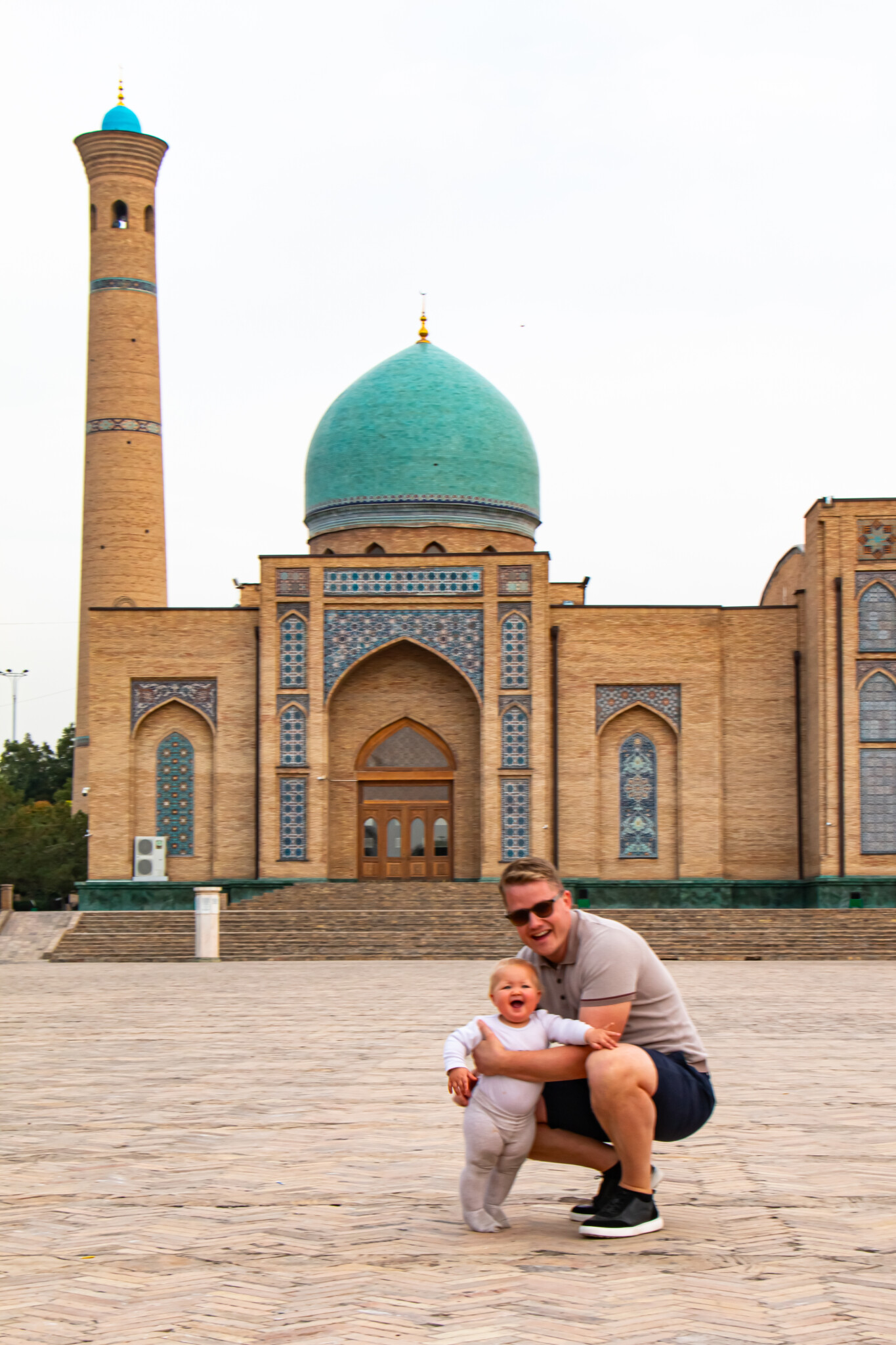
Please note that some of the links on our website are affiliate links. This means if you click on these links and make a purchase, we may receive a small commission at no extra cost to you. These commissions help us maintain and grow our blog.
A Brief History of Tashkent
As the capital of Uzbekistan, Tashkent has stood at the crossroads of history, witnessing the rise and fall of empires while playing a central role in the nation’s development. Its story begins over 2,000 years ago, when it was a key stop along the Silk Road. Over the centuries, it flourished under various rulers, including the Sogdians, Arabs, Mongols, and Timurids. Each leaving their mark and shaping Tashkent into the diverse city it is today.
When the Russian Empire annexed Tashkent in 1865, the city became the administrative hub of Russian Turkestan (Turkestan, “land of the turks, referring to the region from the Caspian Sea to China), setting the stage for profound changes. The city modernized rapidly under Russian influence, with new railways, industry, and urban planning, marking the beginning of its transformation into a major metropolis. After the Russian Revolution, Tashkent became part of the Soviet Union in 1924, leading to another era of rapid development. Under Soviet rule, Tashkent was heavily industrialized and became a city that, blended Soviet architecture with its past as a key stop along the Silk Road. During Soviet rule the country and the capital also suffered repression, including restrictions on religion and local traditions.
The 1966 earthquake destroyed almost 80% of the buildings in the city and was a turning point in Tashkent’s history. The Soviet government rebuilt the city, modernizing it with wide boulevards and Soviet-style buildings, making it a model of socialist urban planning.
When Uzbekistan gained independence in 1991, Tashkent became the capital of the new nation. In the post-Soviet years, the city has been at the forefront of efforts to reclaim and revive Uzbek cultural and religious heritage, while also managing the Soviet legacy that still lingers in its infrastructure, language, and economy.
Today, Tashkent’s relationship with its Soviet past is a mix of pride in its modernization and economic development and a renewed focus on its unique Uzbek identity. The city remains a hub for Russian language and culture, reflecting its Soviet legacy, but it is also a symbol of Uzbekistan’s independence, blending its historic roots with a vision for the future.
Now that you have received a brief introduction to Uzbekistan from a historical perspective, let’s look at what the best things to do in this Central Asian capital are:
Best Places to Stay in Tashkent
Hyatt Regency Tashkent (9.0 / 10)
The Hyatt Regency Tashkent is without doubt one of the top luxury hotels in the city, offering modern and elegant rooms with a sleek design and exceptional service. Perfectly located near the Tashkent Opera House and major attractions, this 5-star hotel has a rooftop terrace with panoramic views of the city, an indoor pool, a full-service spa, and a top-tier fitness center. The dining experience here is also top-notch, with multiple restaurants serving a variety of international and local cuisines. On the downside, its not exactly cheap! But if are one of those who seeks the most comfort and luxury in Tashkent without the need to worry about the price tag, the Hyatt Regency is an excellent choice!
Garnet Hotel Tashkent (9.3 / 10)
Garnet Hotel Tashkent is a charming boutique hotel that offers a cozy, comfortable stay at a very reasonable price. The hotel is located in a quiet area yet within a short drive to the city center and offers a complimentary breakfast (very important if you ask me!) featuring local and international dishes. The hotel also has a swimming pool where you can relax after a day of exploring the city.
One downside is that it’s a bit further from major tourist attractions compared to hotels in the central area, but it’s perfect for travelers looking for a peaceful, budget-friendly option in Tashkent.
Rent an Apartment!
I love renting an apartment anytime I am in a city, not only do you get more space for your money, but you also get to experience the city as a local. Tashkent offers many options for apartment rentals, which can be a great alternative for families (like us) or longer stays. You’ll find a variety of apartments on mainly Airbnb. Look for apartments locationed on or near Uzbekistan Avenue or Navoi Street as these are the most central locations and offer easy access to main attractions.
1. Explore Chorsu Bazaar
As you have seen from my guides on Almaty and Bishkek, nearly all larger cities in Central Asia have a grand Bazaar and a visit the anyone of them wouldn’t be complete without it. The Bazaar is today located inside a characteristic blue dome in the heart of the Old Town, which is a perfect example of Soviet Modernism Style. Chorsu Bazaar has long been a bustling trading hub, serving as a key stop along the Silk Road. Today, its a vibrant market where locals shop for fresh produce, spices, meat, and traditional handicrafts.
The food stalls and vendors selling everything from dried fruits and nuts to Uzbek bread and spices. The scents of cumin, coriander, and saffron fill the air, while the lively chatter of vendors and customers creates a vibrant atmosphere. This is also the place to buy any traditional Uzbek crafts and souvenirs, such as ceramics, carpets and textiles. However be prepared to bargain, as it is a common practice here and part of the culture.
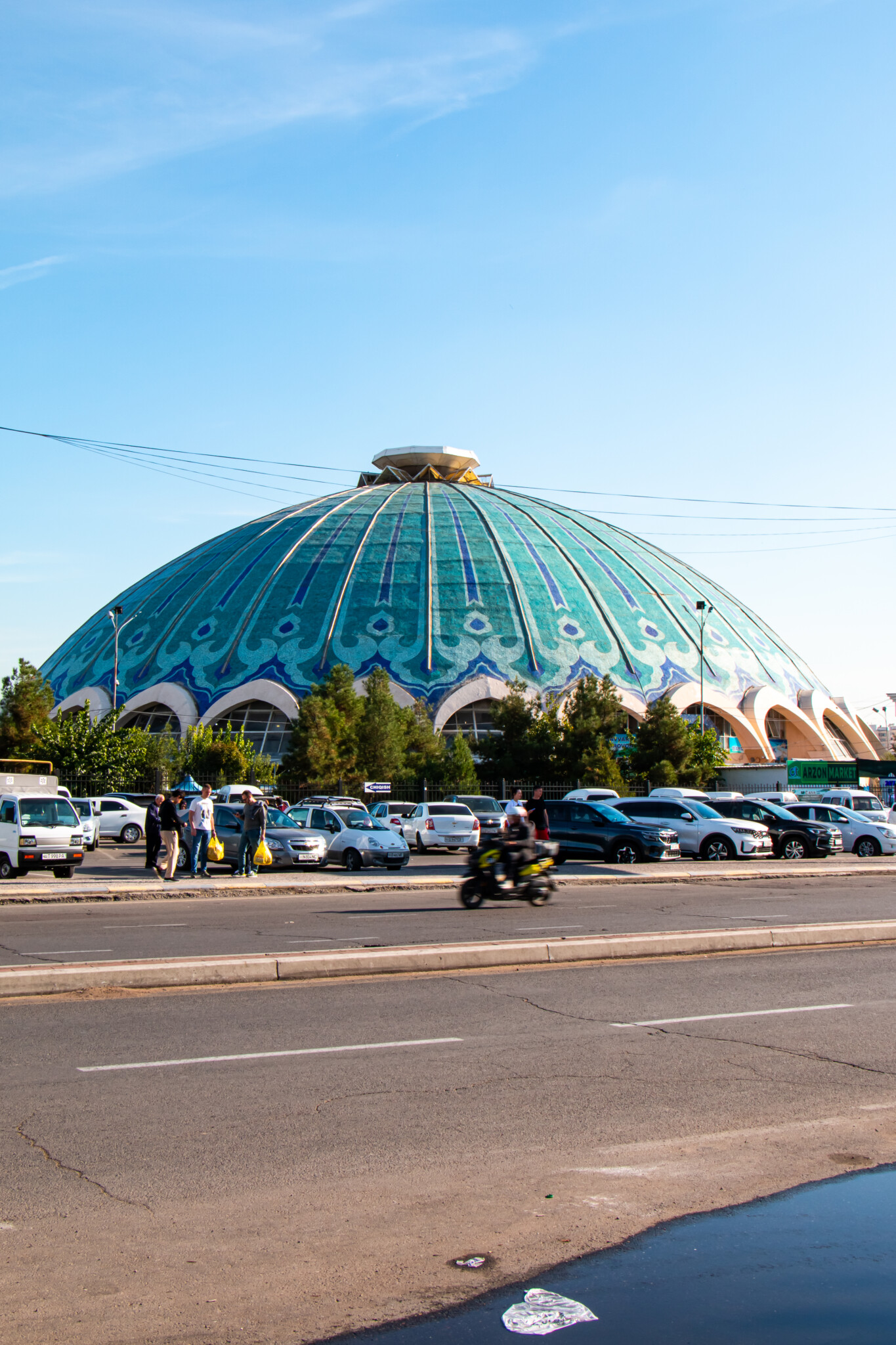
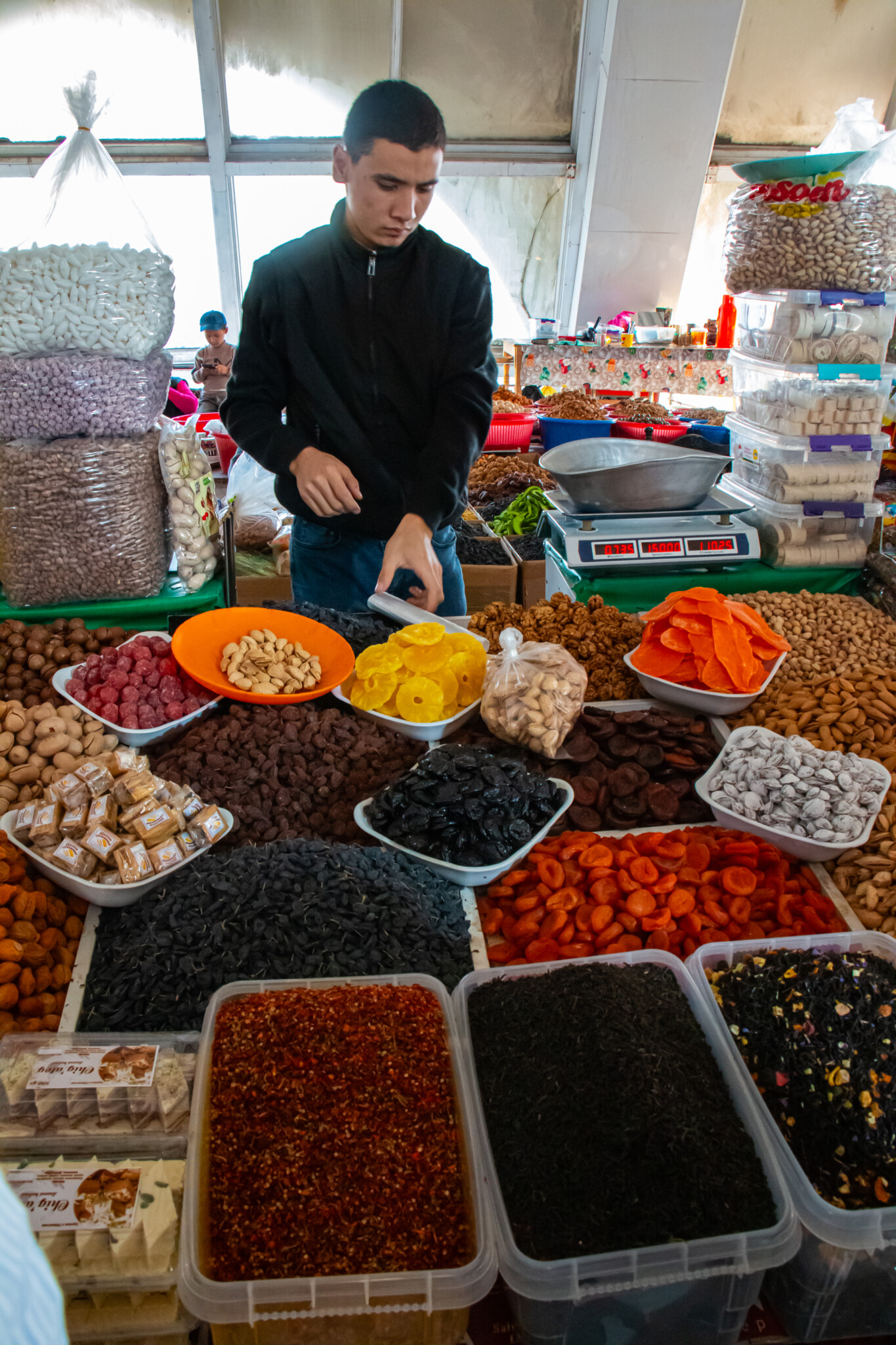
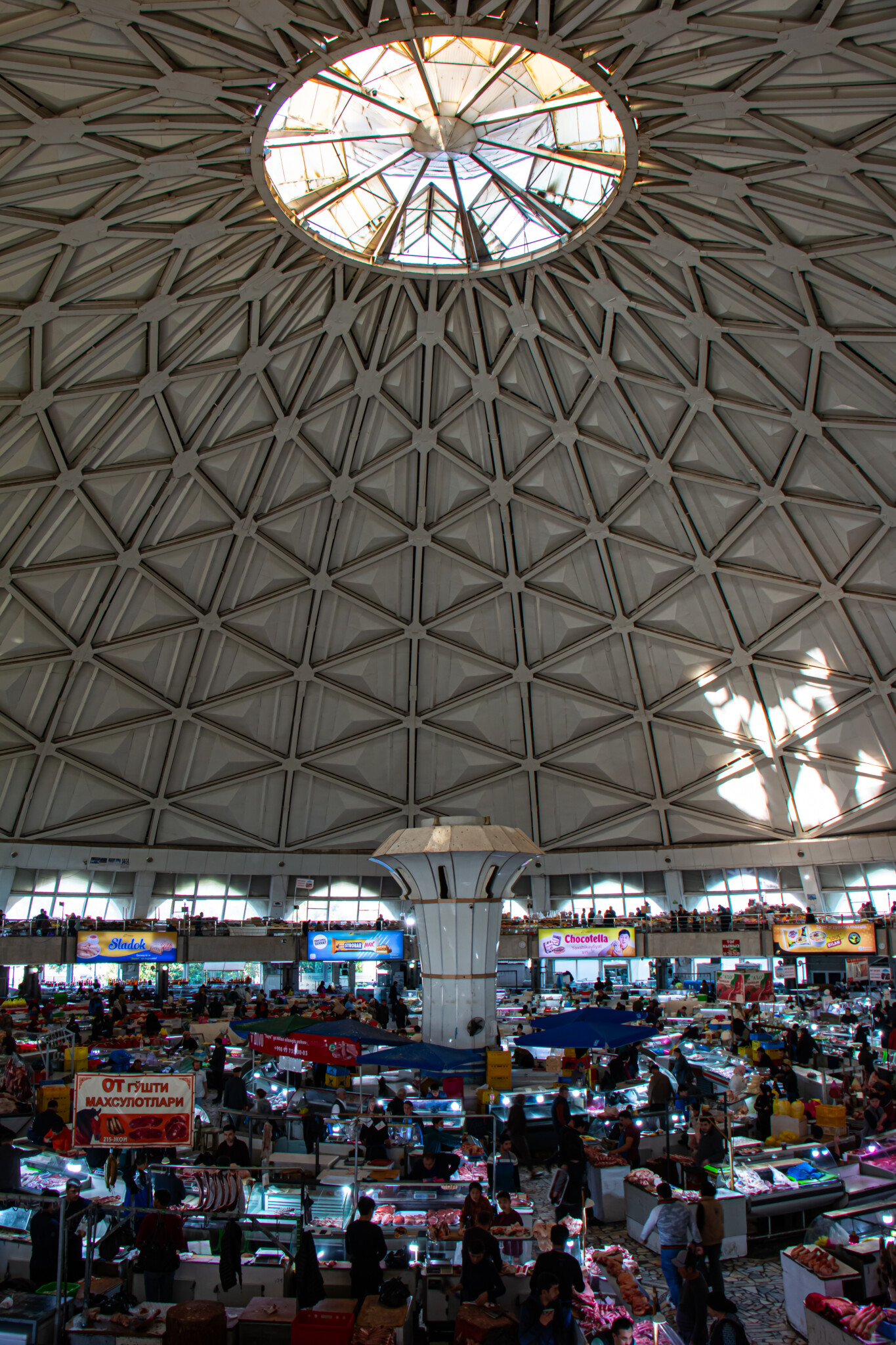
2. Admire the Khast Imam Complex
Usually, I am not a big fan of visiting mosques or churches, if they aren’t offering anything special such as unique architecture or similar. The Khast Imam Complex is one of those exceptions and is also one of the most important religious and cultural sites in Tashkent. The mosque is located in the Old City, this beautiful complex is a must-visit for anyone interested in Islamic architecture and history. The whole complex is home to several stunning buildings, including the Barak-Khan Madrasah, the Tillya Sheikh Mosque, and the Moyie Mubarek Library. The architectural style of the Khast Imam Complex is a blend of Islamic, Persian, and local Central Asian traditions, characterized by intricate brickwork, grand domes, and expansive courtyards. The facades are adorned with glazed turquoise and blue tile mosaics featuring geometric and floral patterns, which are signature elements of Central Asian Islamic architecture.
The Khast Imam Complex is also the home of the Quran of Caliph Uthman, one of the oldest copies of the Quran in the world. This ancient Quran, dating back to the 7th century, is housed in the Moyie Mubarek Library and is a significant relic for both Islamic and world history. The complex is also a peaceful place to walk around and admire the intricate tilework, mosaics, and domes that characterize the architecture of the area.
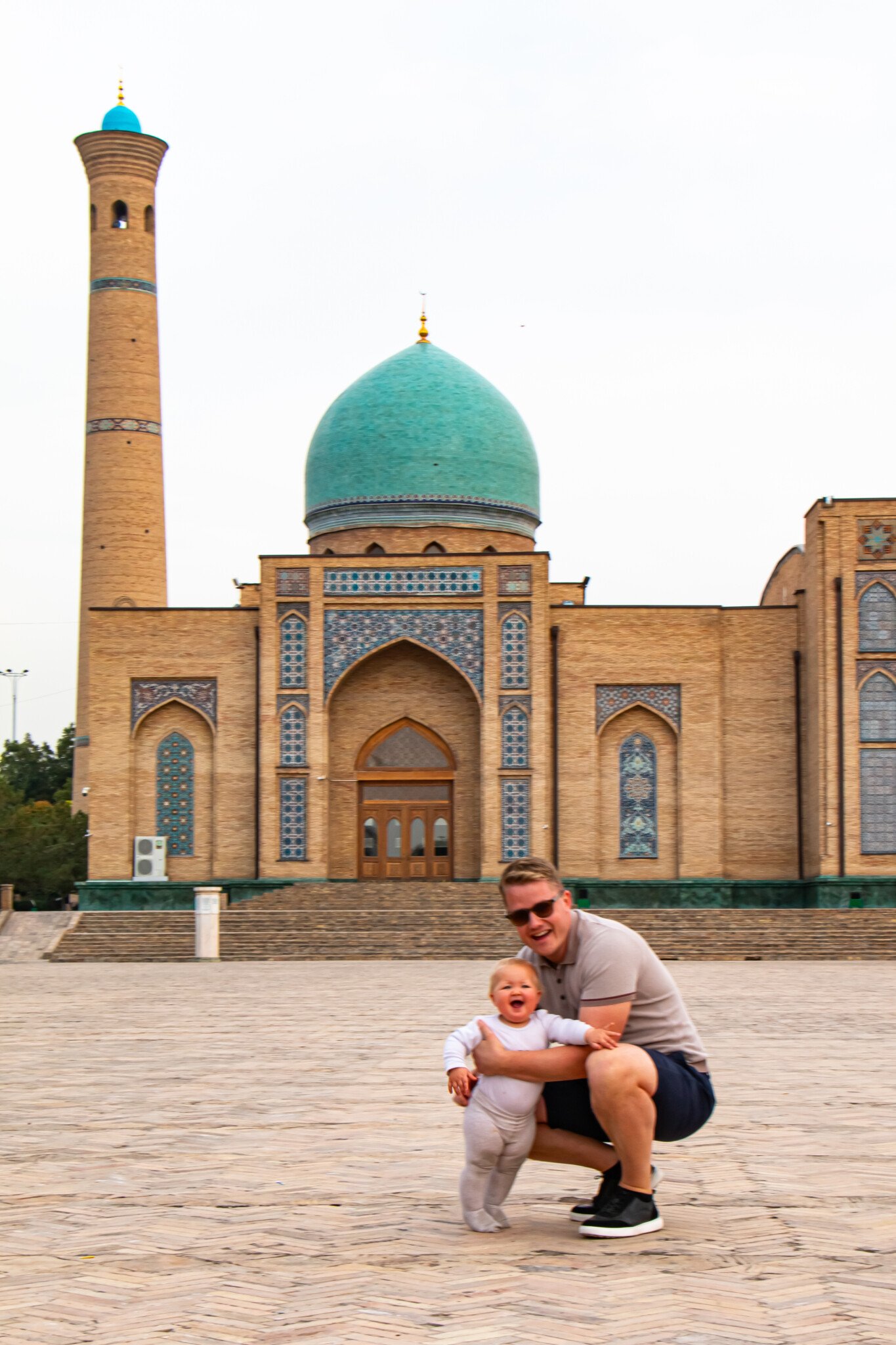
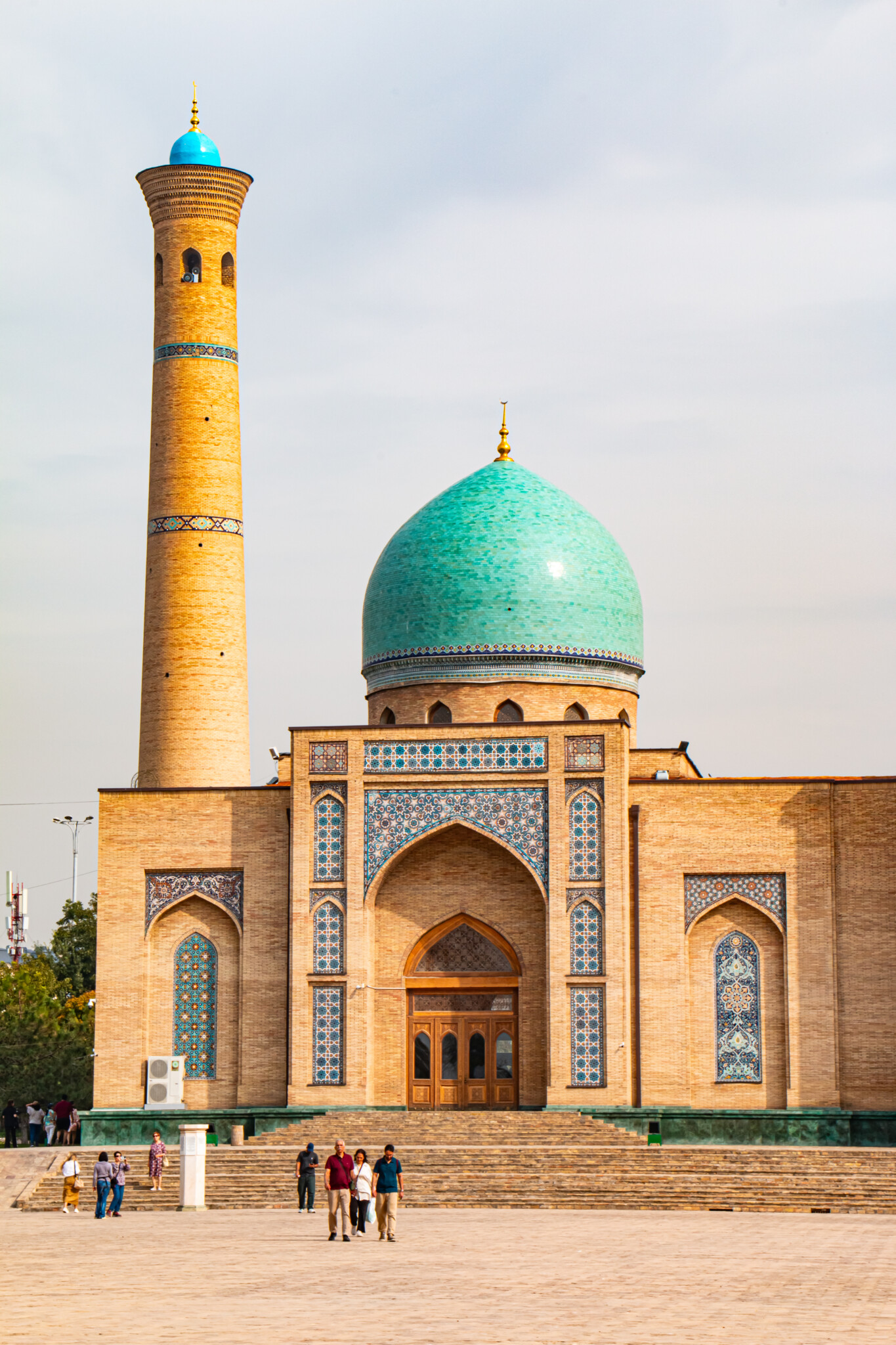
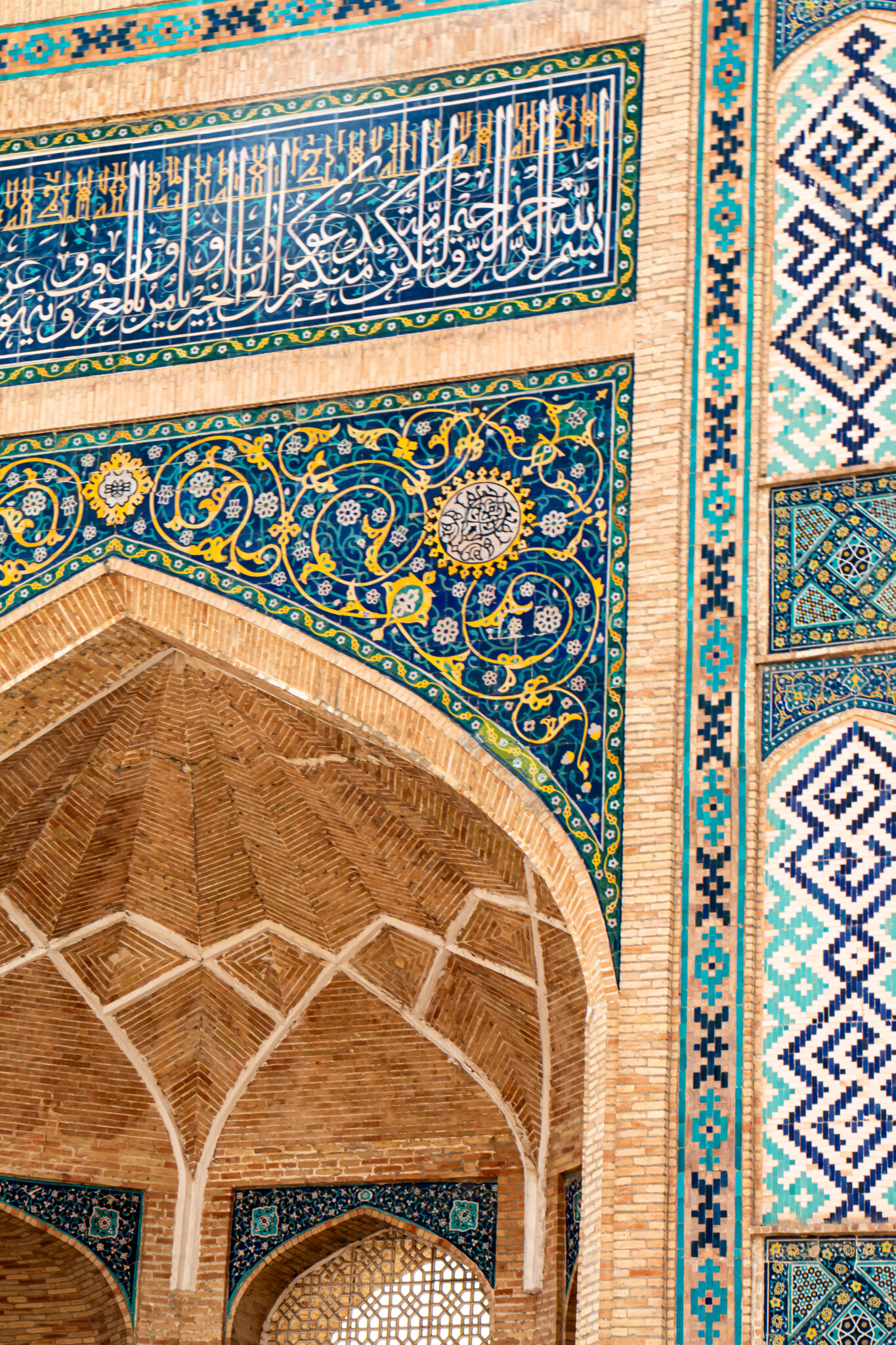
3. Discover Tashkent Metro
One of the most unique attractions in Tashkent is surprisingly enough its metro system! Opened in 1977 during the Soviet era, the Tashkent Metro is not only a convenient way to get around the city, but also an architectural marvel. Each station is a work of art, featuring ornate chandeliers, marble columns, intricate mosaics, and Soviet-era designs (I love it!). People usually say that my hometown of Stockholm has a beautiful metro system, however Tashkent’s subway takes home the prize in my opinion!
The metro stations were originally built as underground bomb shelters for protection in case of a nuclear attack, and the grandeur of their design reflects the Soviet desire to showcase the power and glory of the state. Stations like Kosmonavtlar (dedicated to Soviet space exploration) and Alisher Navoi (named after the famous Uzbek poet) are particularly beautiful and worth visiting.
The Tashkent Metro was off-limits for photography for many years due to security reasons, but as of 2018, photography is now allowed, which has made it a popular spot for capturing the stunning interiors of the stations.
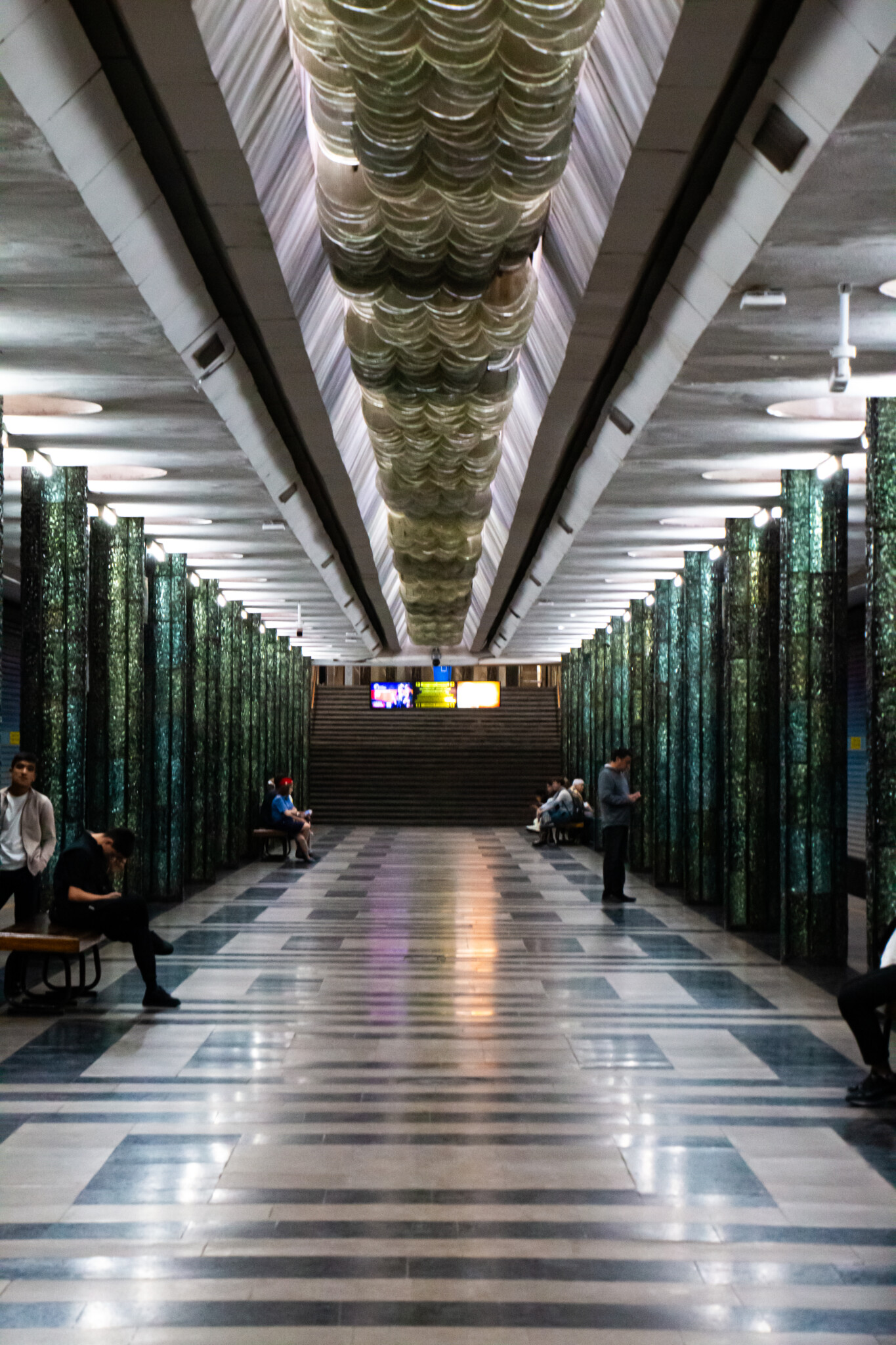
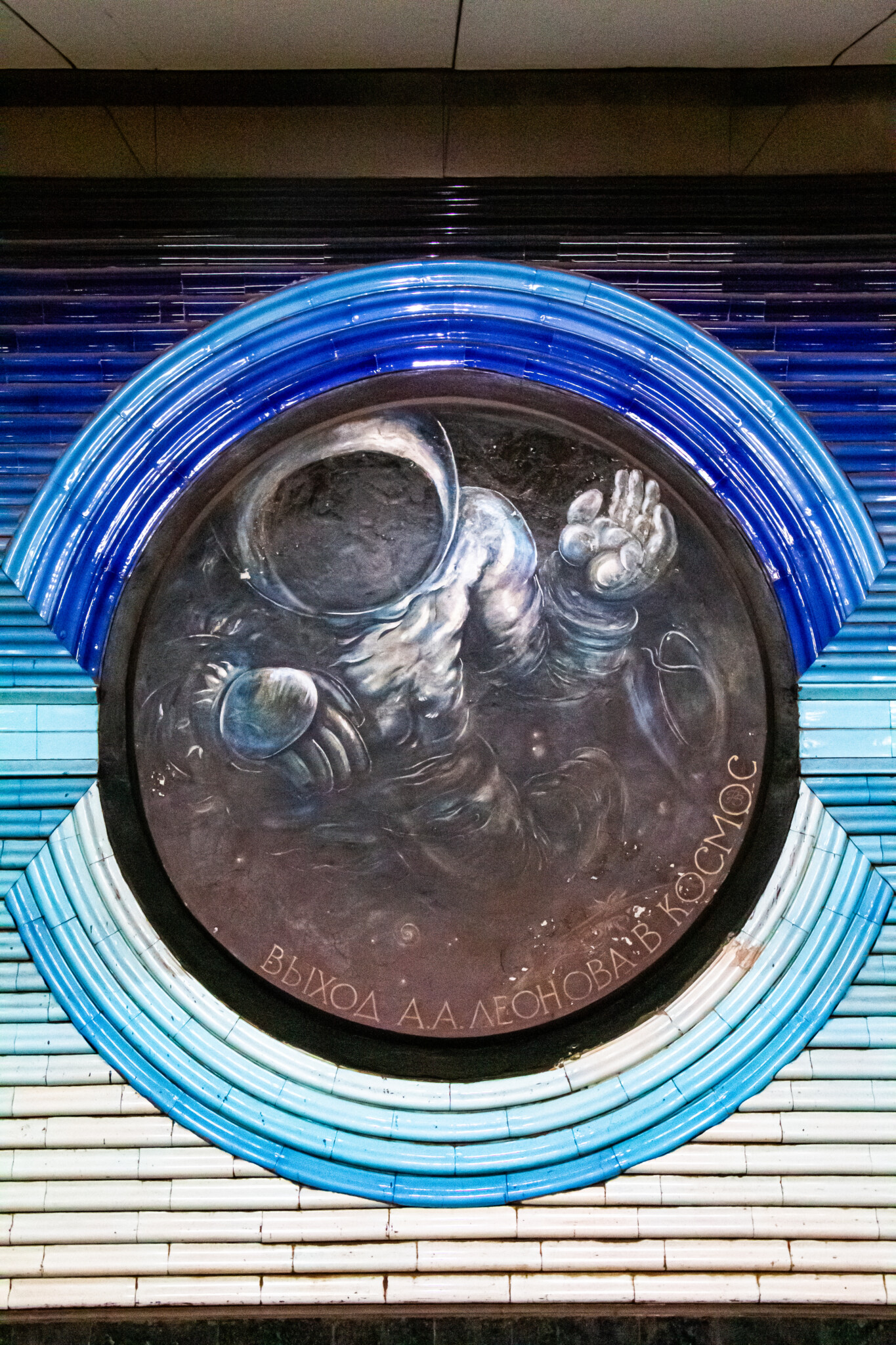
4. Stroll Through Amir Timur Square
Amir Timur, also known as Tamerlane, is one of Uzbekistan’s most revered historical figures, and his legacy can be felt throughout Tashkent. Amir Timur Square, located in the heart of the city, in front of the iconic Soviet-era building “Hotel Uzbekistan”, is a tribute to the 14th-century conqueror and founder of the Timurid Empire, which spanned much of Central Asia, Persia, and beyond. Amir Timur was known for his military genius and brutal conquests and how he sought to revive the legacy of Genghis Khan. Despite his reputation for violence, Timur was a patron of culture, turning Samarkand into a center of Islamic art, architecture, and scholarship.
The square is dominated by a large equestrian statue of Amir Timur, who is depicted as a strong and noble leader. The surrounding park is a popular gathering place for locals and tourists alike, and it’s a great spot for a leisurely stroll or to relax on one of the many benches.
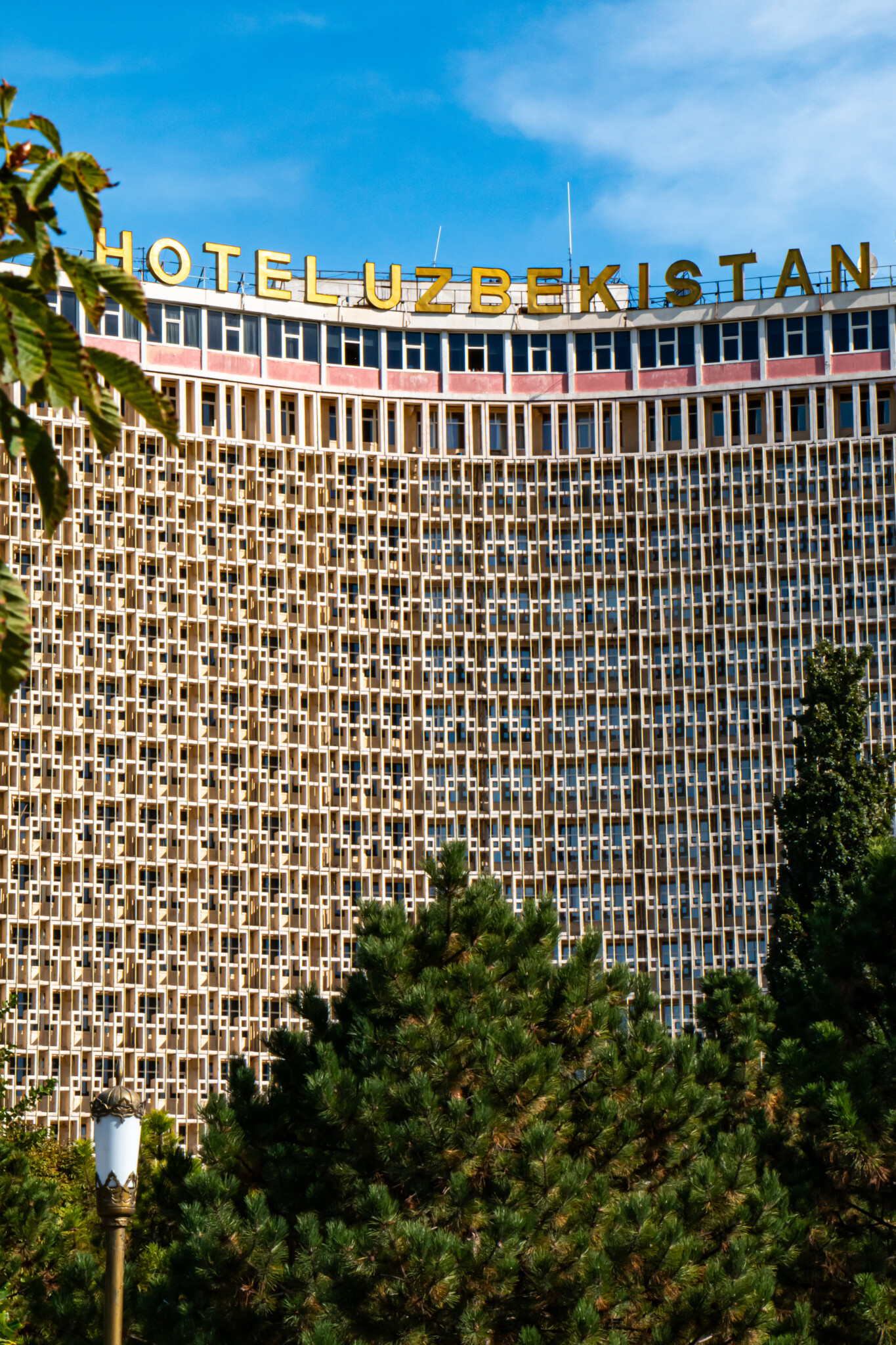
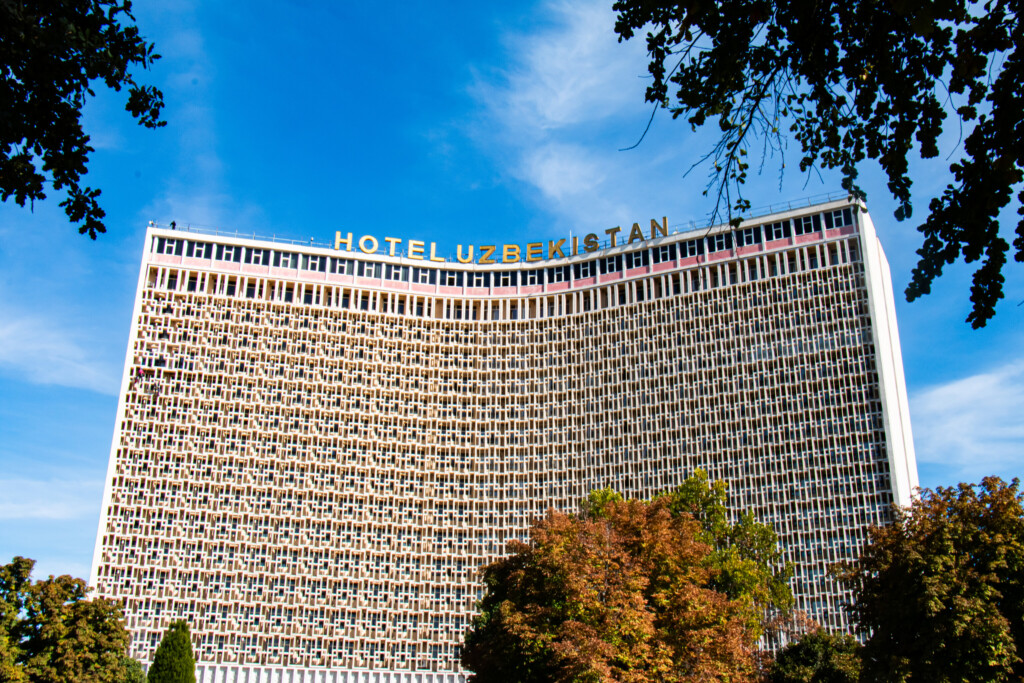

5. Experience Uzbek Cuisine
One of the highlights of any trip to Tashkent is trying out the Uzbek cuisine! The country’s cuisine is known for its hearty, flavorful dishes, many of which have been influenced by the country’s nomadic heritage and its position along the Silk Road. Tashkent is home to countless restaurants, cafes, and street food vendors where you can try some traditional Uzbek dishes.
The most popular and well-known dish is the plov, the national dish of Uzbekistan, which is a fragrant rice dish cooked with meat (usually lamb or beef), carrots, onions, and spices. Each region of Uzbekistan has its own version of plov, and Tashkent is no exception. The city is famous for its Tashkent plov, which is typically served with quail eggs and a side of fresh salad.
Other popular dishes include samsa (savory pastries filled with meat or vegetables), manti (steamed dumplings), and shashlik (grilled meat skewers). For a sweet treat, try chak-chak, a traditional dessert made from fried dough and honey.
To experience authentic Uzbek cuisine, visit one of Tashkent’s many chaikhanas (traditional teahouses), where you can enjoy a meal in a relaxed setting. Many chaikhanas also serve green tea, which is an essential part of any Uzbek meal.
6. Visit the Tashkent TV Tower
If you are looking for a place to get panoramic views of Tashkent, a visit to the Tashkent TV Tower is a must. Standing at 375 meters tall, the Tashkent TV Tower is the tallest structure in Central Asia and one of the tallest in the world. The observation deck is located at around 100 meters above ground, so you won’t be able to get to the top, but you will be treated to a stunning 360-degree view of Tashkent and the surrounding country side. On a clear day, you can even see the mountains that border Uzbekistan and neighboring Kazakhstan.
In addition to the observation deck, the Tashkent TV Tower also has a revolving restaurant, where you can enjoy a meal while taking in the views. However, I would recommend that you stop by the well-known Plov (a famous Central Asian dish) restaurant Besh Qozon, which is located just a stone’s throw away from the TV tower.
7. Experience theater and performance art at the Alisher Navoi Opera and Ballet Theatre
AA recurring theme in all the major cities of Central Asia (and almost all former Soviet Union countries) is the presence of an Opera and Ballet Theatre, which are absolutely worth a visit! The Alisher Navoi Opera and Ballet Theatre, built in 1947, is one of the largest and most prestigious in Central Asia, with a blend of Uzbek and European architectural styles. The interior is grand, with stunning chandeliers and intricate detailing, giving you an elegant atmosphere for enjoying world-class performances.
Throughout the year, a wide range of operas, ballets, and classical music concerts are hosted here, including both international classics and local Uzbek works. Russian masterpieces such as Swan Lake and The Nutcracker are frequently part of the theatre’s repertoire. Much like the theatre in Almaty, the one in Tashkent is named after a famous local poet—this time, Alisher Navoi, a 15th-century poet and philosopher considered one of the greatest literary figures in Central Asia.
Even if opera or ballet isn’t something you typically attend, experiencing a performance at the Alisher Navoi Theatre is a great way to immerse yourself in the local culture—you won’t regret it, I promise!
8. Take a Walk in Independence Square
Independence Square (Mustaqillik Maydoni) is the largest square in Tashkent and one of the most important public spaces in Uzbekistan. Originally built during the Soviet era (then called Lenin Square), the square has since been transformed into a symbol of Uzbekistan’s independence. It’s a sprawling, to-perfection landscaped space filled with fountains, gardens, and statues, which makes it a great place to go for a stroll.
In the centre of the Independence Square stands the Monument of Independence and Humanism, a golden globe topped with a map of Uzbekistan, meant to symbolize the country’s sovereignty. Nearby, you’ll find the Eternal Flame, which burns in memory of the soldiers who lost their lives during World War II, and the Happy Mother Statue, meant to represent the strength and hope of the Uzbek people.
The square is surrounded by government buildings, including the Senate and the Cabinet of Ministers, and is often used for official ceremonies and national celebrations.
9. Explore the Tashkent Botanical Garden
If you want to escape the urban environment and just clear your thoughts for a bit. Head to the Tashkent Botanical Garden, spanning over 65 hectares, and is home to thousands of species of plants, including many native to Uzbekistan and Central Asia.
The garden is divided into several sections, each dedicated to different types of flora, including a rose garden, an alpine garden, and a section with rare and endangered plants. There are also greenhouses filled with tropical plants and flowers, providing year-round beauty. Spring and summer is naturally the best time to visit the garden with flowers in full bloom and birds chirping in the trees.
10. Visit the Museum of Applied Arts
One of the most visually stunning museums in Tashkent is the Museum of Applied Arts. The museum is housed in a beautiful 19th-century building that was once the home of a Russian diplomat, and filled with traditional Uzbek crafts and artistry. The building itself is a work of art, with its intricately decorated ceilings, colorful tiles, and detailed wood carvings.
The museum’s collection includes a wide variety of traditional crafts, such as ceramics, textiles, jewelry, and woodwork, all of which showcase the rich cultural heritage of Uzbekistan. The exhibits highlight the craftsmanship that has been passed down through generations, from delicate suzani (embroidered textiles) to intricately carved kish (wooden columns). Even if you are not a huge fan of museums (which I can understand), the museum is still worth a visit due to its beautiful architecture, so be sure not to miss out on this one!
11. Discover the Sheikhantaur Mausoleum Complex
The Sheikhantaur Mausoleum Complex is one of the most important spiritual sites in Tashkent and a place of pilgrimage for many Uzbeks! The complex is named after Sheikh Khovendi at-Tahur, a 14th-century Sufi saint who is believed to have performed many miracles. His tomb is the focal point of the complex, which also includes several smaller mausoleums and mosques.
The architecture of the Sheikhantaur Mausoleum is another work of art, which reflects the distinctive style of Islamic Central Asia, with its blue-domed roof and intricately decorated tilework. The complex is a peaceful and serene place, offering visitors a chance to learn about the Sufi traditions—mystical Islamic practices focused on inner spirituality, divine love, and personal connection with God—that have long been an important part of Uzbek culture.
12. Take a Day Trip to the Charvak Reservoir and Chimgan Mountains
If you get tired of the hectic vibe of Tashkent, and want to experience more of the nature in Uzbekistan, make sure to head to the Charvak Reservoir and the Chimgan Mountains, located about 80 kilometers northeast of Tashkent. Both these destinations offer a relaxing escape into the mountains and are popular spots for hiking, swimming, and picnicking, depending on the season.
The Charvak Reservoir is a large, man-made lake surrounded by the dramatic peaks of the Tien Shan range. In the summer months, it’s a popular spot for water sports, including swimming, boating, and jet-skiing. The area surrounding the lake is also dotted with resorts and guesthouses, making it a great place to relax a weekend.
Just beyond the reservoir are the Chimgan Mountains, a popular place for outdoor activities year-round. In the summer, the mountains are ideal for hiking and horseback riding, with trails that offer gorgeous views of the lake and the surrounding landscape. In winter, the area transforms into a ski resort, so be sure to try that out if you are here during winter. After all, how many do you know that have gone skiing in Uzbekistan?
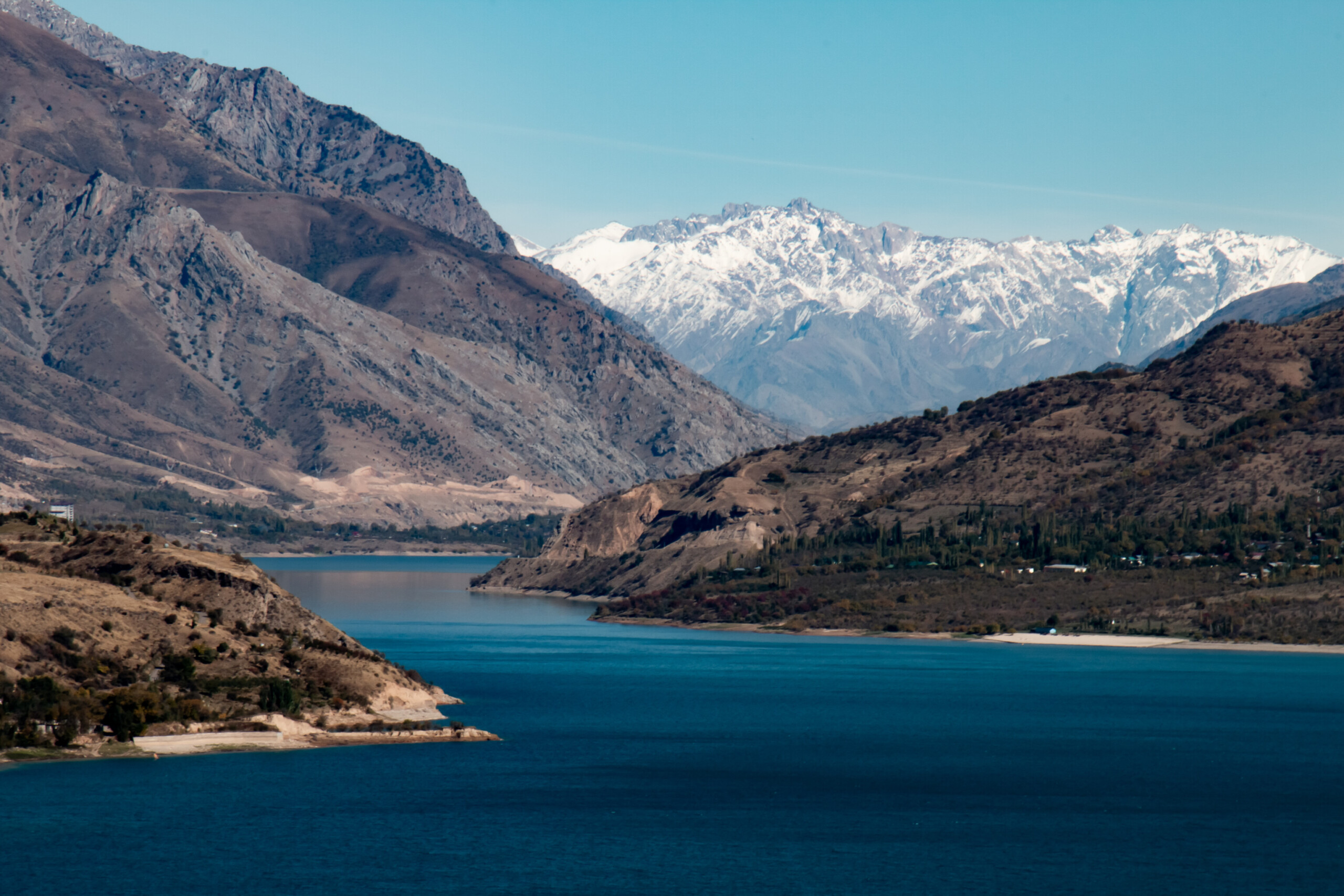
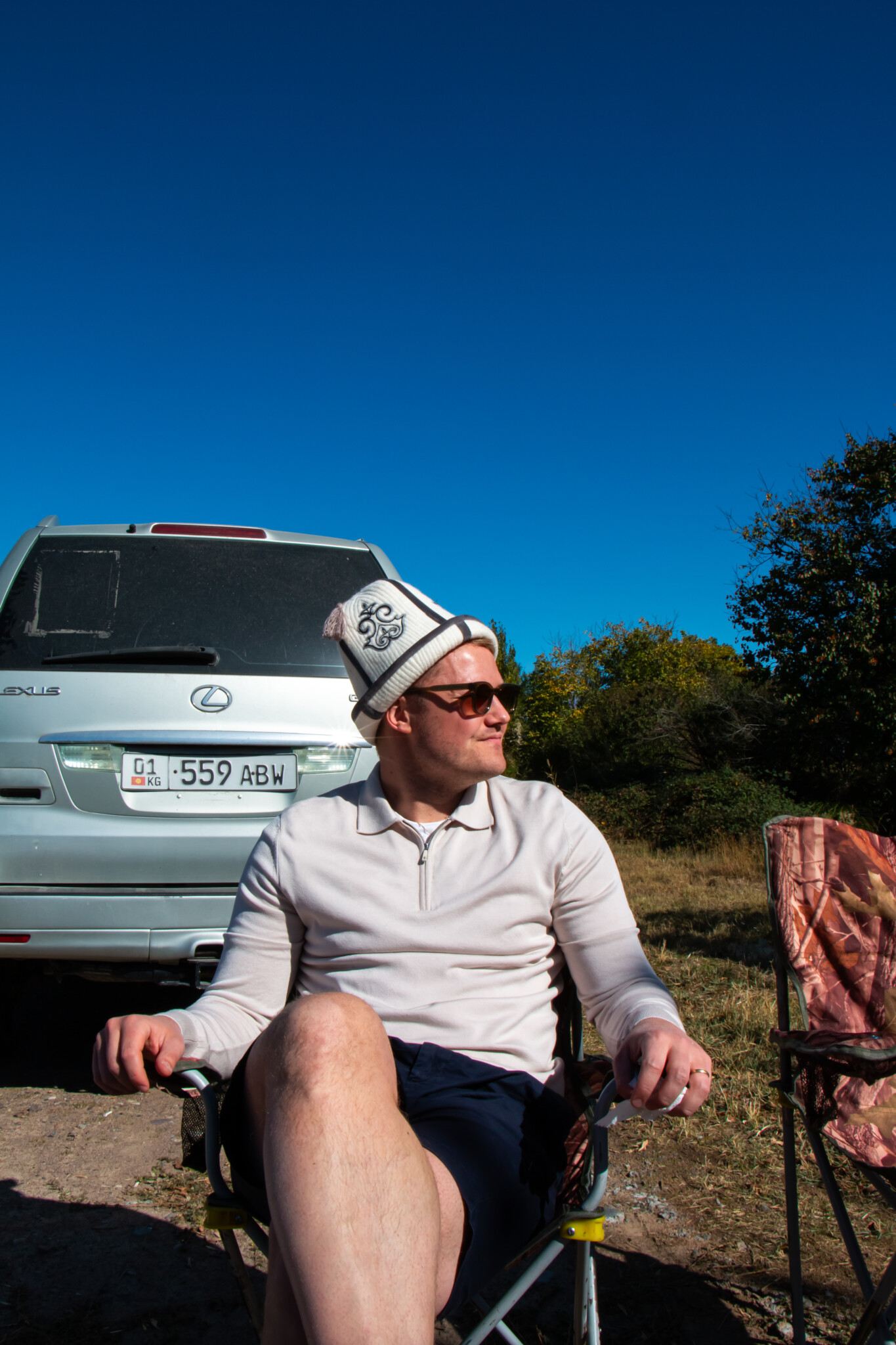
13. Visit the Minor Mosque
Due to Soviet and Communist rule over Central Asia during much of the 20th century, religion has had a downplayed role in the region, in comparison with neighboring Afghanistan or Pakistan. However, Islam is being increasingly promoted in the country and the Minor Mosque, completed in as recent as 2014, is an example of that.
None the less, the Minor Mosque is one of the most beautiful modern mosques in Tashkent. Located along the banks of the Ankhor Canal, the mosque’s striking white marble facade and blue dome make it a landmark that stands out in the city. Despite its recent construction, the Minor Mosque has quickly become one of the most important religious sites in Tashkent.
Inside, the architecture of the mosque is equally impressive, with a spacious prayer hall adorned with intricate patterns and calligraphy. Outside of prayer times, anyone is welcome inside the mosque. If you can, try visiting the mosque at sunset, when the setting sun cast a golden glow over the white marble, which creates a pictures scene along the Ankhor Canal
